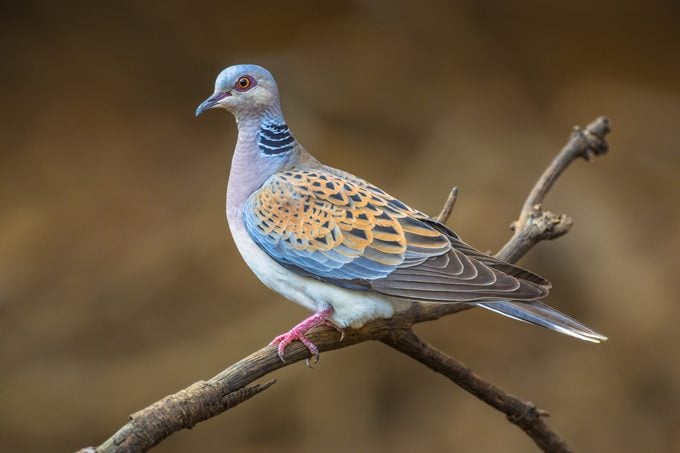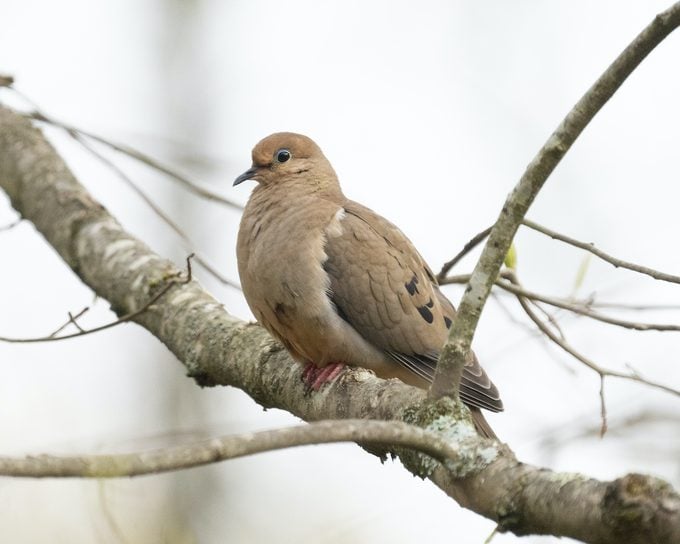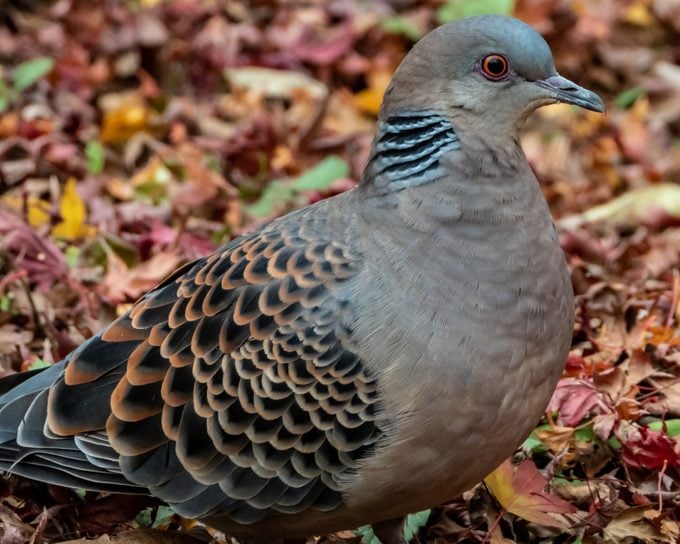Is a Turtledove a Real Type of Bird?
Updated: Jan. 26, 2024
If you've only heard turtledoves mentioned at Christmastime, you may wonder if they even exist. Learn where these birds live and what they symbolize.
What Is a Turtledove?

In the classic Christmas carol, “12 Days of Christmas,” the singer receives two turtledoves on the second day. Turtledoves are real birds that have been referenced in various art forms for hundreds of years. Because they mate for life, turtledoves are a symbol of lasting love and strong commitment, which is why you’ll see them show up in love poems and songs. (Shakespeare mentioned the turtledove multiple times in his work, too.)
Although there are several different species of turtledoves, the species that’s usually being referred to casually as a “turtledove” is the European turtle-dove (Streptopelia turtur).
Discover 13 fascinating mourning dove facts.
Where Do Turtledoves Live?

The European turtle-dove can be found throughout most of Europe and migrates south to northern Africa in the winter, though rarely it’s been found as north as Russia.
In England, you’re most likely to see a turtledove in the south and east during breeding season in spring and early summer. Turtledoves nest in trees and shrubs at the edges of woodlands, parks, and orchards, and turtledoves usually lay two eggs in a single clutch.
Another turtledove species is the Oriental turtle-dove (Streptopelia orientalis). It’s a very common bird throughout Asia but on extremely rare occasions, Oriental turtle-doves have migrated as far as Alaska and California. The Oriental turtle-dove looks similar to the European turtle-dove but has darker coloring and if you look closely, four to six dark bars on its neck instead of three to four.
Learn how to identify a white-winged dove.
Turtledoves vs Mourning Doves

Turtledoves often get confused with mourning doves. They’re in the same dove family Columbidae but in different genuses. The easiest way to know which bird you’re looking at is by where you are in the world. European turtle-doves are incredibly rare sights in North America, and similarly, mourning doves aren’t typically found in Europe.
Mourning doves are a little larger than turtledoves and their markings are different, too. Mourning doves are grayish with a few black spots on their wings and they have pale peach-colored heads and chests. European turtle-doves are darker gray with brown wings that have intricate patterns. They also have blackish-blue bars on their necks. See what a Eurasian collared-dove looks like.
Turtledoves also have a different call compared to the mourning dove’s long lament. In fact, turtledoves get their name from their purring ‘turr-turr‘ call rather than the reptile.
What mourning doves and turtledoves do have in common is their diets. They both forage along the ground for food and stick mostly to eating seeds.
Learn about mourning dove eggs and baby mourning doves.
Are Turtledoves Rare?

The numbers of turtledoves in England have greatly decreased. Some estimates cite a 98% population drop since 1970 due to hunting and habitat destruction. They are now considered a vulnerable species. Conservation efforts are underway to bring their numbers back up.
Next, enjoy 25 breathtaking mourning dove pictures.




















